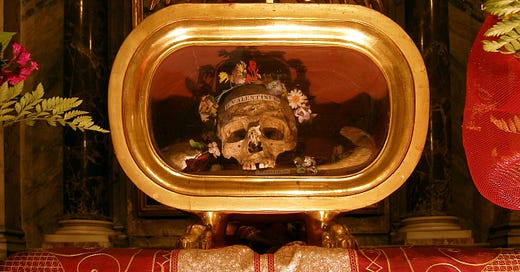Heal a blind girl, smile
and walk towards certain death -
be my Valentine.
Happy Valentine’s Day!
The Valentine's Day tradition carried on throughout the West today originates in the feast day of a Christian saint. I saw his skull relic, photographed above, in the church of Santa …
Keep reading with a 7-day free trial
Subscribe to Beautifully Broken to keep reading this post and get 7 days of free access to the full post archives.




